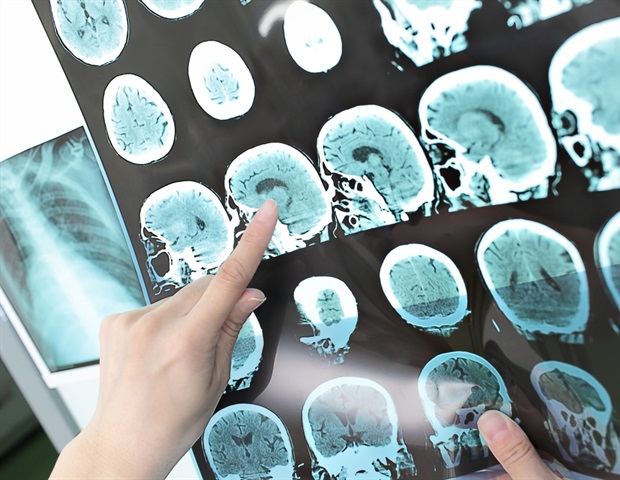People who survive an ischemic stroke are much more likely to develop major heart complications during the first month after their stroke, and, as a result, they also have an increased risk of death, heart attack or another stroke within five years, compared to people who don't develop heart problems soon after a stroke, according to new research published today in Stroke, the peer-reviewed, flagship journal of the American Stroke Association, a division of the American Heart Association.
Ischemic stroke is the most common type of stroke – accounting for 87% of all strokes – and occurs when blood flow to the brain is blocked. After a stroke, people often have cardiovascular complications, known as stroke-heart syndrome. Heart complications include acute coronary syndrome, angina (chest pain), heart rhythm issues such as atrial fibrillation, arrhythmia and ventricular fibrillation; heart attack; heart failure or Takotsubo syndrome (broken heart syndrome), a type of stress-induced temporary enlargement of a part of the heart that impacts its ability to pump effectively. These conditions increase the risk of disability or death in the short term, yet the long-term consequences for people with stroke-heart syndrome is unknown.
We know heart disease and stroke share similar risk factors, and there's a two-way relationship between the risk of stroke and heart disease. For example, heart conditions such as atrial fibrillation increase the risk of stroke, and stroke also increases the risk of heart conditions. We wanted to know how common newly diagnosed heart complications are after a stroke and, importantly, whether stroke-heart syndrome is associated with increased risk of long-term major adverse events."
Benjamin J.R. Buckley, Ph.D., lead author of the study and postdoctoral research fellow in preventive cardiology at the Liverpool Centre for Cardiovascular Science, University of Liverpool, United Kingdom
Researchers analyzed the medical records of more than 365,000 adults treated for ischemic stroke at more than 50 health care sites predominantly in the United States, between 2002 and 2021. People who were diagnosed with stroke-heart complications within four weeks after a stroke were matched to an equal number of stroke survivors who did not have these heart complications within four weeks (the control group).
After adjusting for potential confounding factors, such as age, sex and race/ethnicity, and comparing the stroke survivors who had new heart complications to those who did not, the analysis found:
- Overall, among all stroke survivors in the study, about 1 in 10 (11.1%) developed acute coronary syndrome, 8.8% were diagnosed with atrial fibrillation, 6.4% developed heart failure, 1.2% exhibited severe ventricular arrythmias and 0.1% developed 'broken heart' syndrome within four weeks after the stroke.
- Risk of death within five years after a stroke significantly increased among the participants with new heart complications: 49% more likely if they had developed acute coronary syndrome; 45% more likely if they had developed atrial fibrillation/flutter; and 83% more likely if they developed heart failure. Severe ventricular arrhythmias doubled the risk of death.
- Chance of hospitalization and heart attack within five years after a stroke was also significantly higher among those who developed heart complications within the one-month window.
- Stroke survivors with Takotsubo syndrome were 89% more likely to have a major heart event within the five years after their stroke.
- People who developed atrial fibrillation after stroke were 10% more likely to have a second stroke within five years after their stroke.
- People with stroke and newly diagnosed cardiovascular complications were 50% more likely to have a recurrent stroke within five years after the first stroke.
"I was particularly surprised by how common stroke-heart syndrome was and the high rate of recurrent stroke in all subgroups of adults with stroke-heart syndrome" Buckley said. "This means that this is a high-risk population where we should focus more secondary prevention efforts."
The study's results build on the understanding of the two-way link between the brain and the heart and extend this understanding to long-term health outcomes. "We are working on additional research to determine how stroke-heart syndrome may be better predicted," Buckley said.
"We also need to develop and implement treatments to improve outcomes for people with stroke-heart syndrome," Buckley said. "For example, comprehensive exercise-based rehabilitation may be helpful after a stroke, so for people with stroke and newly developed heart complications, it should also be beneficial, maybe even more so. I think this is an interesting area for future research."
Study limitations include that it is a retrospective analysis and knowing whether the heart complications diagnosed following an ischemic stroke were caused by stroke or rather contributed to the stroke, is unclear.
"This research underscores why it's so important for neurologists and cardiologists to work hand-in-hand with their patients and each other to understand why the first stroke occurred and perform a comprehensive assessment to identify new risk factors for another stroke and for cardiovascular disease that may require initiation of prevention therapies," said Lee H. Schwamm, M.D., volunteer chair of the American Stroke Association Advisory Committee and the C. Miller Fisher Chair in Vascular Neurology at Massachusetts General Hospital in Boston. "The American Stroke Association recommends a personalized secondary stroke prevention plan for every stroke survivor."
American Heart Association
Posted in: Medical Research News | Medical Condition News
Tags: Acute Coronary Syndrome, Angina, Arrhythmia, Atrial Fibrillation, Blood, Brain, Broken Heart Syndrome, Cardiology, Cardiomyopathy, Cardiovascular Disease, Chest Pain, CT, Disability, Exercise, Health Care, Health Insurance, Heart, Heart Attack, Heart Disease, Heart Failure, Hospital, Ischemic Stroke, Neurology, Pain, pH, Primary Care, Research, Stress, Stroke, Syndrome, Vascular
Source: Read Full Article
